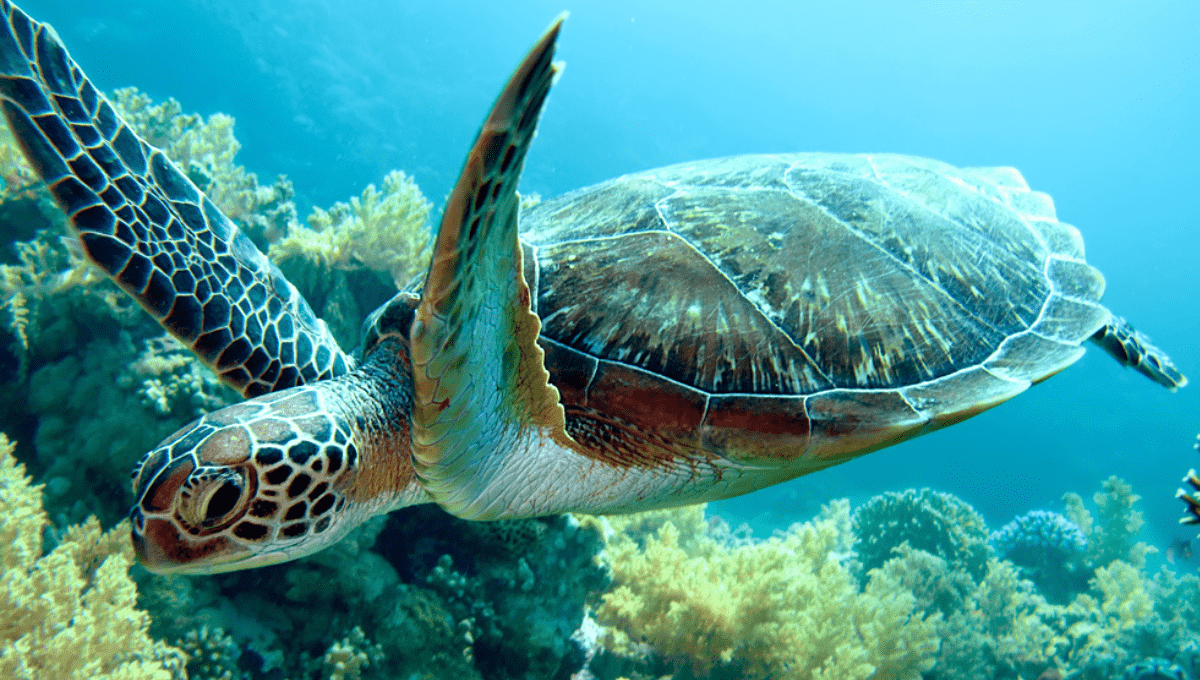Are you curious about turtles for your school assignments or intrigued by these creatures after a chance encounter? This post is your gateway to a trove of facts about both land and sea turtles, providing you with the insights you crave!
If you have other questions you’d love to know the answer to, don’t miss out on our other animal facts for kids articles here.
Fast fun turtle facts
Turtles, belonging to the reptile family, sport a protective shell that shields them from potential predators. Remarkably, their heads can retract into this sturdy shell, a nifty trick we all might envy at times. With the ability to inhabit land, sea, or freshwater, turtles showcase incredible diversity.
Find some fun turtle stickers to add to your craft collection or school project here.
Quick-reference list: 10 fun facts about turtles for kids
- Turtles fall under the Testudines family of reptiles.
- Their classification depends on how their heads retract into the shell.
- Turtles are divided into Cryptodira and Pleurodira categories.
- The turtle’s shell develops from their ribs.
- Various turtle species thrive on land, in the sea, or freshwater.
- There are approximately 356 turtle species worldwide.
- Turtles can be found on every continent except Antarctica.
- Oceans host seven distinct sea turtle species.
- A tortoise is a member of the turtle family.
- Certain turtle species trace back to the time of dinosaurs.

Where do turtles live?
Turtles reside in diverse habitats—land, sea, and freshwater, including ponds, rivers, and lakes. Southern Asia and the southeast of North America boast higher turtle populations. Each species gravitates towards its preferred habitat, creating a fascinating tapestry of turtle dwellings worldwide.
What do turtles eat?
Turtle diets vary by species, ranging from meat-eating snapping turtles to herbivorous tortoises. Some turtles prefer marine grasses, insects, snails, or crayfish. The diverse dietary preferences of these fascinating creatures add to the intrigue of their existence.
Insights into baby turtles
Turtles lay eggs, leading to the emergence of hatchlings during specific seasons. The number of eggs laid varies, with some species laying just a few while others lay over 150. Certain turtle species can live for a century or more, harkening back to a history spanning 250 to 300 million years.

Save the turtle: a call to action
Did you know you can adopt a sea turtle through WWF? Unfortunately, many turtles face critical endangerment due to climate change and human activities. While efforts are underway to prevent their extinction, there’s still much work to be done.
Check out this range of books on turtles for kids, they are awesome!
Fun turtle facts by species
Explore the diverse world of sea turtles, land turtles, and freshwater turtles with these engaging facts about specific species.
Green Sea Turtle facts
- Second-largest sea turtle, largest hard-shell turtle.
- Weighs 135 to 160 kilograms.
- Length ranges from 90 to 120 centimeters.
- Found on the Great Barrier Reef.
We LOVE these sea turtle soft toys – check them out here!
Hawksbill Turtle facts:
- Critically endangered sea turtle.
- Coastal dwellers in the Pacific, Indian, and Atlantic Oceans.
- Lays about 150 eggs per clutch.
- Typically lives for 30 to 50 years.
- Found in parts of Queensland and Western Australia.
Loggerhead Turtle facts:
- Scientifically known as Caretta Caretta.
- Typically lives for over 50 years.
- Omnivores preferring seafood like crabs, mussels, and clams.
- Can travel up to 12,000 kilometers.
- Exist in QLD, NSW, NT, and WA.

Snapping Turtle facts:
- Large freshwater turtle preferring slow-moving water.
- Boasts super-strong jaws.
- Scientific name, Chelydra Serpentina.
- Omnivores consuming a variety of plants and animals.
- Found in the rivers of northern and northeastern Australia.
Leatherback Turtle facts:
- Largest turtles globally with leathery, soft shells.
- Thrives in colder seas than other species.
- Favors jellyfish as a primary food source.
- Occasional visitors to beaches in various Australian states.
Olive Ridley Sea Turtle facts:
- Second-smallest sea turtle.
- Most abundant sea turtle species.
- Prefers water up to 150 meters deep.
- Found on the Great Barrier Reef and in parts of QLD, NT, and WA.
Red-Eared Slider Turtle facts:
- Also known as the red-eared terrapin.
- Popular worldwide as a pet.
- Adaptable turtle, but illegal in Australia due to invasive potential.
Information about turtles for kids
We hope you’ve enjoyed these captivating turtle facts. To conserve these remarkable creatures, let’s deepen our understanding, share knowledge, and respect nesting turtles when required. Turtles, existing for millions of years, deserve our preservation efforts to ensure they remain a vibrant part of future generations’ education.
You can buy cool turtle stickers here – don’t forget to ask your parents’ permission!

